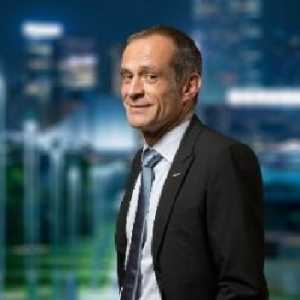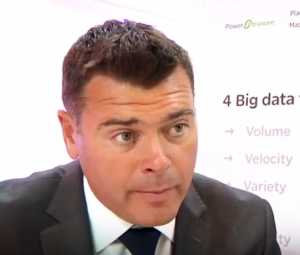Named for the two-headed Roman god Janus, January is a time for reflection on the past and for looking forward to the future. In the tech world, this back-and-forth typically takes the form of development cycles, as one solution contains within it the kernel of the next, and as a company builds market positioning, based on a foundation of what it has established in the past. Schneider Electric provides case in point of this kind of evolution, while illustrating a key transition that has emerged in the last few years and that is likely to animate the future – the shift towards digitization of industrial processes.

According Juan Macias, president of Schneider Electric Canada, the US-based company has a 100 year history in Canada, which began with focus on electrical distribution. Over time, Schneider has engaged in a number of acquisitions and now operates five research centres/manufacturing facilities in the country: the Vancouver Global Centre for Solar Inverters, where Schneider also manages the intermittent connection to the main power grid; a power metering facility in Victoria; a centre in Montreal (based on acquisition) with an energy management system for medium sized buildings that features room control; a software business for asset management and automation of waste water treatment located in Burlington, and a research relationship with Ryerson University in Toronto.
Schneider’s assessment of future opportunity is based on a feast or famine view of the world’s energy usage. As Jean-Pascal Tricoire, chairman and CEO, Schneider Electric, explained on a visit to Canada this year, digitization, industrialization and urbanization mega trends are having huge impact on energy consumption. Citing estimates presented by organizations such as the US Energy Information Administration, Tricore noted that worldwide energy consumption is expected to increase by close to 50 percent by 2040, challenging the world to live up to carbon emissions commitments made with the Paris Agreement forged at COP21 in 2015. If the world is to avoid climate disorders and the health effects of pollution, Tricoire argued, carbon emissions will to be cut in half and energy efficiency increased by a factor of three. At the same time, there are approximately two billion people in the world that do not have decent access to electricity, which Tricoire described as a fundamental human right that is the basis for progress. Armed with energy management solutions across the spectrum, Schneider is positioning itself in the middle of this “deadlock” – the twin issues of associated with abundance and scarcity. Through microgrid and other energy products, Tricoire claimed, the company has brought electricity to a million families in developing regions over the past year, and based on two technology breakthroughs continues to operate as “energy optimists” that believe it is “possible to think of a future that is decarbonized.”

Beyond the emergence (and greater affordability) of renewables, the two revolutionary technologies that Tricoire referred to are digitization and its close cousin, the Internet of Things, which can each contribute to creation of more decentralized systems in which consumption is dramatically curtailed. Tricore sees special potential for better energy management in cities, which currently account for approximately 80 percent of carbon emissions. Going forward, Schneider also intends to focus innovation on IoT and related solutions for the home and building segment, for energy infrastructure (i.e. Smart Grid) and Industry.
So what are the key components of Schneider’s IoT strategy in these verticals? As early as 1997, the company introduced its plan for the industrial segment with launch of the Transparent Factory, an initiative aimed at replacing proprietary networking protocols with Ethernet and Internet technologies, and at embedding web servers into Ethernet devices such as PLCs, drives and I/O devices to simplify management, and improve the performance and interoperability of IT and OT systems. A precocious precursor to the Industrial Internet of Things (II0T), Schneider has leveraged the Transparent Factory concept by continuing to ensure that all its devices are connectable, and now offers a compliment of services including planning, scheduling, asset management, and analytics – in SCADA and all hosted on a Schneider secure cloud for real time shop automation. Most recently (November, 2016), Schneider moved to brand its IoT capabilities as the next generation of EcoStruxure, an end-to-end platform designed to support IoT solutions by connecting three core layers of the technology stack – connected products, edge control and applications/analytics and services (based on in the integration of recent acquisitions such as Invensys, Telvent and Summit Energy) – deployed at scale by building, grid, industry and data centre customers. According to Chief Technology Officer, Prith Banerjee, “EcoStruxure combines our history in pioneering in automation, energy management and deep domain expertise with data-driven metrics and analytics to help us maximize the value of the Internet of Things for our customers.”
If the right solutions are now available, a key hurdle to broader IoT adoption continues to lie in lack of the vision needed to create the business case that would help users recognize IoT potential and push for its deployment. In a recent survey of 402 Canadian business and IT leaders conducted by InsightaaS, for example, 70 percent of respondents identified issues associated with visioning (unable to develop business case; no executive sponsor for IoT initiatives, cannot measure the ROI, lack of strategic vision to position IoT as delivering competitive advantage, and inability to convince senior management that IoT is a priority) as a primary barrier to IoT deployment. Schneider is also working to address these issues, and shared some of its tactics in discussion with InsightaaS this year. In the following interview transcript, Martin Stephenson, VP process automation Canada hub, Schneider Electric, describes work the company is doing at a customer level to build IoT solution awareness and to resolve questions around transition from Industry 3.0 to Industry 4.0, IT/OT interoperability, cloud security and process for local implementation.

Mary Allen, chief content officer, InsightaaS: I see from your bio that you were an engineer. At a very basic level, when you have conversations with customers around IIoT, what experience is more useful to you? Is it an IT discussion you have, or do you draw on your engineering background?
Martin Stephenson, VP process automation Canada hub, Schneider Electric: One of the key challenges we have is trying to communicate the Industrial Internet of Things and Industry 4.0 because this represents a convergence of IT and OT. When we’re at a site having discussions with end users, it is somewhat difficult when we don’t have an alignment between the operational process department and the information technology department. There are some organizations where these work together, and then there are other segments where IT and OT are fundamentally split, and then the question becomes who’s responsibility is it to get data from A to B, and who’s responsibility is it to store the data? That’s when the whole concept of what we are trying to do is lost, and we end up in the weeds talking about bits and bytes. We miss the whole point of we are trying to achieve with this transformation.
Allen: So there is a technology divide between IT and OT, and a cultural dimension to this. How do you bridge this gap, and who do you speak to first to create the business case when, for example, you go into a gold mining operation?

Stephenson: A big issue lies in producing tangible cues of evidence that this can work, is working, and is the right thing to do. Not just the right thing to do from an electrics point of view, but from a mining point of view, or water, or food and beverage. The goal is to optimize across all these areas, to make a smarter plant and to make it a safer, more reliable, more efficient and more sustainable. When taking this down to the level of individual examples of what people are actually doing, the overall goals can get lost. We talk about Industry 4.0 as the next revolution, but in my opinion we need to stop that, and talk instead about transformation – because the majority of customers, across the Canada, the UK and the US, are still getting on board Industry 3.0. They’re still trying to optimize their plant floors, and to introduce automation and control. So to talk about taking data, pushing data and hosting it elsewhere, and about analytics and software-as-a-service for managing all their assets is a paradigm that many customers don’t yet understand.
Allen: I appreciate this because we talk to technology users in addition to technology vendors, who are typically ahead of customers – users have to operate with a number of constraints, including budget cycles, or leadership and would be leery of the bleeding edge.
Stephenson: The first thing to do is to understand the culture of your customer – is the company leading edge, cutting edge and what’s its vision? Is the company an early adopter or a laggard? After positioning the customer, you need to approach the company stakeholder by stakeholder, engaging the CEO and the production manager in the discussion in order to be able to build a story around what the vision could be. And it’s bespoke for every individual customer: for some it’s appropriate to discuss Industry 3.0, while other are very open to Industry 4.0; they just don’t know where to start. They have optimized their site, they are doing energy monitoring, they are doing energy management, and they are doing process control, but they don’t know what to do to take them to the next level of smart plant.
Allen: This seems a very good, very pragmatic approach. From this perspective, what are some of the more obvious quick wins that customers in the industrial segments you are targeting can find? And what are some of the benefits that can be quantified, so that the customer can proselytize the journey to Industrial 4.0? Can you offer a couple of examples?
Stephenson: The first thing we can do to engage in the Industrial Internet of Things is to talk about networking the existing power infrastructure of the site. So for example, say the company has medium voltage switch gear, or low voltage switch gear as part of its power distribution on site. The goal would be to connect this (Schneider components all have IP addresses) and push data generated by that equipment to the cloud for visualization, creating a cyber asset. Next we would start to do very basic analytics – on energy usage, for example, to identify consumption by different zones or devices. And then we can take that information and push it via the cloud to simple dashboards that will appear on customer devices.
Allen: So you are talking about control for different environmental conditions to improve your conservation profile?
Stephenson: First we are talking about monitoring – visualization on the device of energy usage across the plant. The next step is where we go from monitoring to management, where questions are asked and decisions made based on data observations: “why is wing six using more energy than wing five?” Or “why is process line one using more energy than process line two? And you continue that journey. We’re not talking about networking a single asset to create a cyber asset and then throwing that information at the customer – the point is to start really small, to visualize it, and then manage it.
Allen: Does Schneider provide the control functionality in addition to monitoring?
Stephenson: All of our assets have the ability to be controlled, and we provide the actual control, depending on customer needs. In a hospital, for example, we have a number of systems where we can offer management and control. In an airport, we have the ability to monitor and manage the power infrastructure. In these cases, the customer can have control, or we can come in and do remote control. But customers may simply want monitoring for safety and visibility. At Schneider, we concentrate on four domains: power management, automation and control, building management and IT/data centre white space, including big colocation facilities and the small server room in a school. We have expertise in these four domains, as well as the ability to monitor or manage.
Allen: I’d like to understand more about how you address technical interoperability challenges –from the perspective of both IT/OT integration and procurement within the Industrial Internet ecosystem that is under development. Presumably you work with partners at a site. How do you manage issues with standards and technical compatibility?
Stephenson: When engaging with Industrial Internet users, it’s best to have a leading sponsor who will take that leap of faith to say this is where we need to be in five or ten years’ time. This is how you change culture, drive down and digitize the DNA. This also makes it easier to talk to purchasing about developing innovative solutions, which may be cloud based. These staff will be a lot more comfortable if they have a key sponsor above them who has said, “Don’t worry, you don’t have to convince me.” The difficulty arises when you cannot find a key sponsor and you are trying to change the culture bottom up. That’s not easy when people are still confused about Industry 3.0 and Industry 4.0 – especially in today’s aggressive market.
In terms of technology capabilities, as an OEM, that’s where we need to step up and become more open with our protocols, and become more comfortable running with third party integrators using third party software supplies. We need to be able to say, 90 percent of your site is Schneider Electric, and there is 10 percent that isn’t. For me to adapt my software, to change the roadmap would take three to five years, but for the local systems integrator or software house to come in and bridge the gap between what I’ve got and what the end user needs to do is absolutely the right thing to do. So we need to change our culture in the large OEMs as well, and that’s not just Schneider Electric, to be more comfortable to engage in that discussion with local suppliers and integrators, and to partner with these companies to develop solutions.
Allen: So then would you release API information to a local integrator so they could pull everything together on a customer site?
Stephenson: At this moment, we’re working with local universities and with one in particular on something called an ETL (extract, transform and load). They will be developing an ETL solution so they can take data from our system, transform it slightly and push it into the end user’s system. The end users don’t want to spend millions on new software – what they want is the data.
If we go back to the 1980s or 1990s when Industry 3.0 was just starting, there were proprietary communications protocols – Modbus was the first open protocol ever, and before that there was Profibus, and DeviceNet. Communication was closed and there was no way for us to integrate: we ended up putting gateways between [IT and OT] but these slowed the transfer of traffic between software. It was painful and 99 percent of the time, it was the gateway that failed. Now everything is more Ethernet TCIP and while the integrator would still need access to kernel information, it’s a lot easier because the networking connectivity is easier. The Ethernet principle has opened up this door to us – and now it’s up to us to become more comfortable with opening up our software to integrators – if you can just extract that, transform and load that for the customer and you’ve got a perfect solution.
Allen: I can understand the initial hesitation because in the Industrial Internet we are dealing with critical systems. Some might consider financial systems to be vital, but I think about power management in a hydro plant as more critical because there may be human safety at stake. The risk is at a whole other level when you bring the physical up to the logical….
Stephenson: We just need to be open to it. The financial example is interesting. In the UK, we worked with two banks where we helped them to monitor their energy and all of our software and systems had to be held within their buildings at Canary Warf. We spent a year and a half trying to convince the customer to push the data to the cloud to do some analytics, and the push back was “we’re just not comfortable with the cloud” – an approach that is sort of amazing because they expect me to use the cloud to access my accounts in the bank. What they are saying is: “it works for you, but it doesn’t work for me.”
Allen: I’m interested in understanding how Schneider is positioning the IIoT opportunity. Are you branding products this way, and what segments will your work towards?
Stephenson: We’ve enabled all of our individual devices to be networked and connected. Also, a lot of our more critical assets – motor control centres, circuit breakers, relays, variable speed drives – you can manipulate those so that they are perfectly in tune with the intelligence of the Industrial Internet of Things. So, for example, we would take an MCC (motor control centre which may control 60 odd motors) and make it intelligent and network it. But the challenge is to convince people to allow us to engage with that asset – to duplicate it in the cloud and build a cyber asset, to which we can apply analytics around energy usage, management, performance, preventative maintenance, remote switching, and diagnostics. That’s the leap of faith that we are struggling with at Schneider Electric.








